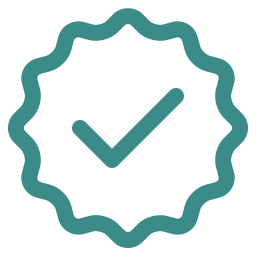Pilates and Full-Body Integration: Achieving Balance, Coordination, and Harmony Through Mindful Movement
Do you want to achieve a balanced and stable body while improving your overall fitness? Look no further than Pilates!
With its holistic approach to movement, Pilates focuses on integrating your mind and body for optimal performance.
Did you know that over 12 million people worldwide practice Pilates regularly?
This popular exercise method not only strengthens your core but also enhances flexibility and range of motion.
In this article, we will explore the principles of Pilates and how you can integrate it into your fitness routine for maximum results.
The Principles of Pilates
The principles of Pilates are essential for achieving proper alignment and body awareness.
These principles serve as the foundation for effective exercises that target every muscle group in your body when you decide to do a full-body Pilates workout on your Pilates Reformer with tower. With a focus on integration and balance, Pilates helps you develop strength, flexibility, and coordination all at once.
One of the key principles of Pilates is precision. Every movement is performed with intention and control to ensure that you engage the right muscles and maintain proper form throughout. This attention to detail not only maximizes the effectiveness of each exercise but also helps prevent injuries.
Another important principle is centering, which refers to engaging your core muscles, specifically the deep abdominal muscles known as the powerhouse. By activating your powerhouse during full-body Pilates equipment exercises, you create a strong foundation from which all movements originate. This not only strengthens your core but also improves overall stability and posture.
Control is another fundamental principle in Pilates. It emphasizes moving with grace and fluidity while maintaining control over each motion. By practicing controlled movements, you not only build strength but also enhance body awareness and mindfulness.
Breathing plays a crucial role in Pilates as well. The deep breathing techniques used in this practice help oxygenate your body, relax your mind, and promote better circulation. Proper breathing patterns during full-body Pilates exercises can enhance their effectiveness by allowing for greater range of motion and improved muscular engagement.
As you explore the principles of Pilates that guide a full-body workout, it becomes clear that this exercise method goes beyond physical fitness alone; it encompasses a holistic approach to movement that integrates mind and body seamlessly together.
The Mind-Body Connection in Pilates
Focus on your mind and body connection in Pilates to enhance your overall movement experience. Pilates is not just about physical exercise; it's a holistic approach that emphasizes the integration of your mind and body. By bringing awareness to your movements, you can achieve a deeper level of engagement and reap the full benefits of a whole-body Pilates workout.
To begin, let's explore how the mind-body connection works in Pilates. As you perform each exercise, focus on engaging specific muscle groups while maintaining proper posture and alignment. This conscious effort allows you to connect with your body deeper, enhancing proprioception and body awareness.
As a beginner in full body Pilates workouts, it's important to start with simple exercises that gradually challenge your strength and flexibility. By doing so, you can build a solid foundation for more advanced movements later on your Lagree Megaformer for sale. Remember to listen to your body and avoid pushing yourself too hard or straining any muscles.
Throughout your practice, pay attention to the breath. Deep inhalations help oxygenate the blood, providing energy for efficient muscle contractions, while exhaling fully helps release tension and engage the core muscles.
By focusing on this mind-body connection during every full body Pilates workout for beginners or otherwise, you will notice improvements in coordination, balance, flexibility, and overall movement quality over time. The integration of mental focus with physical exertion creates harmony within yourself.
Now that you understand the importance of connecting with your mind and body during Pilates workouts, let's move on to aligning your body for balance and stability in order to maximize the effectiveness of each exercise without even realizing it.
Aligning Your Body for Balance and Stability
To achieve balance and stability in your workouts, it's essential to align your body properly. When practicing a total body workout on your AeroPilates Reformer 651, proper alignment is crucial for maximizing the effectiveness of each movement and minimizing the risk of injury. In a full Pilates workout, every exercise is designed to engage multiple muscle groups simultaneously, promoting strength, flexibility, and coordination throughout your entire body.
Aligning your body for balance and stability starts with understanding the basic principles of Pilates. The first principle is neutral spine alignment - finding a natural curvature in your spine that maintains its three natural curves: the cervical or neck curve, thoracic or mid-back curve, and lumbar or lower back curve. This ensures that your spine is properly supported during exercises.
Next, focus on engaging your core muscles. Your core includes not only the abdominal muscles but also the deep stabilizing muscles surrounding your pelvis and hips. By activating these muscles throughout each exercise, you create a strong foundation for movement while maintaining balance and stability.
Proper alignment also involves correct placement of other body parts such as shoulders, hips, knees, and feet. For instance, keeping your shoulders relaxed away from your ears helps prevent tension in the neck and upper back. Aligning hips over knees or ankles ensures optimal joint positioning for safe movement.
By aligning your body correctly during a full Pilates workout, you enhance both balance and stability while optimizing muscle engagement. This allows you to perform exercises with precision and control while reducing strain on vulnerable areas.
Now that you have established proper alignment through mindful positioning of your body parts, let's explore breathing techniques for enhanced performance in Pilates movements without interruption.
Breathing Techniques for Enhanced Performance
Once you have established proper alignment, it's important to incorporate specific breathing techniques for enhanced performance during Pilates movements on your M3S Megaformer.
Breathing is a fundamental aspect of Pilates that helps bring awareness to your body and aids in full-body integration.
By focusing on your breath, you can enhance the effectiveness of each movement and achieve a more balanced and efficient workout.
Here are some key breathing techniques to incorporate into your full body Pilates workout at home:
Diaphragmatic Breathing:
- Take deep breaths into your belly, allowing it to expand with each inhale.
- Exhale fully, drawing your navel towards your spine.
- This type of breathing encourages relaxation and activates the deep core muscles.
Coordinated Breathing:
- Inhale before initiating a movement.
- Exhale as you exert effort or engage the core muscles.
- This coordinated pattern helps stabilize the body during challenging exercises.
By practicing these breathing techniques, you can optimize the benefits of each minute full body Pilates session.
Deep diaphragmatic breathing allows for better oxygenation of muscles while promoting relaxation and focus.
Coordinating your breath with movement ensures that you engage the appropriate muscles at the right time, enhancing both strength and control throughout your workout.
As you become more proficient in incorporating these specific breathing techniques into your full-body Pilates routine, you will find yourself more connected to every movement.
Your mind-body connection will deepen as you cultivate awareness through mindful breathwork.
Now let's explore how strengthening your core with Pilates exercises further enhances overall stability and balance without skipping a beat.
Strengthening Your Core with Pilates Exercises
When strengthening your core with Pilates exercises, you'll notice an improvement in overall stability and balance.
Pilates focuses on developing a strong core by targeting the deep muscles of the abdomen, back, and pelvis.
These exercises engage your muscles in a balanced way especially when you perform it on your Megaformer EVO, helping to create a solid foundation for all movement.
One of the key principles of Pilates is alignment; it emphasizes proper posture and body awareness.
By strengthening your core muscles, you'll naturally improve your posture as well.
This not only enhances your appearance but also helps prevent common problems such as lower back pain.
In addition to stability and postural improvements, Pilates also promotes better balance.
The exercises challenge your body's ability to maintain equilibrium while performing various movements.
As you strengthen your core, you'll find that maintaining balance becomes easier both during exercise and in daily activities.
Improving flexibility and range of motion is another benefit of Pilates.
While many people think of this form of exercise as primarily focused on strength training, it actually incorporates stretching movements too.
These stretches help lengthen tight muscles and increase joint mobility.
Improving Flexibility and Range of Motion
You'll notice an increase in flexibility and range of motion as you engage in regular Pilates sessions.
Pilates is a holistic approach to movement that focuses on strengthening the core while also improving flexibility throughout the entire body.
Through a series of controlled and precise movements, Pilates targets specific muscle groups, helping to lengthen and stretch them.
One of the main benefits of Pilates is its ability to improve flexibility.
As you perform exercises that require stretching and extending your limbs, you'll find that your muscles become more supple over time.
This increased flexibility not only allows for a greater range of motion but also helps prevent injuries by promoting proper alignment and posture.
Pilates works by targeting both large muscle groups and smaller stabilizing muscles, which are often overlooked in traditional exercise routines.
By engaging these deep intrinsic muscles, you develop better control over your movements, leading to improved overall body coordination.
In addition to physical benefits, Pilates can also have a positive impact on mental well-being.
The focus required during each exercise promotes mindfulness and concentration, allowing you to connect with your body on a deeper level.
Integrating Pilates into Your Fitness Routine
To incorporate Pilates into your fitness routine, start by adding a few exercises that focus on core strength and flexibility.
Pilates is a holistic approach to movement that aims to integrate mind and body, providing numerous benefits such as improved posture, increased muscle tone, and enhanced overall body awareness.
By incorporating Pilates into your fitness regimen, you can develop a strong core foundation while improving flexibility throughout your entire body.
Begin with exercises like the Hundred, which targets both abdominal strength and breath control.
Lie on your back with your legs in a tabletop position and lift your upper body off the ground while pumping your arms up and down.
This exercise engages deep core muscles while promoting circulation and warming up the body.
Another essential exercise is the Roll-Up. Start lying flat on your back with arms extended overhead.
Slowly curl up one vertebra at a time until you reach a seated position before rolling back down again.
The Roll-Up strengthens the abdominals, improves spinal mobility, and enhances overall flexibility.
To further challenge yourself, try the Plank pose for core stabilization.
Begin in push-up position but rest on your forearms instead of hands.
Engage your core muscles by lifting your hips slightly higher than your shoulder level while keeping a straight line from head to heels.
Frequently Asked Questions
How long does it take to see results from practicing Pilates?
You can start seeing results from practicing Pilates in as little as a few weeks.
Regular practice, about 2-3 times per week, will help you notice improvements in your strength, flexibility, and posture.
As you continue to practice over time, you'll experience even greater benefits such as increased body awareness and improved overall muscle tone.
Remember to listen to your body and progress at your own pace for the best results.
Can Pilates help with weight loss?
Pilates can be an incredible tool for weight loss. Its focus on full-body integration and core strength can help you burn calories and build lean muscle mass.
While it's not a magic solution, incorporating Pilates into your fitness routine can accelerate your weight loss journey.
By engaging multiple muscle groups simultaneously, Pilates increases your overall calorie burn and improves your metabolism.
Plus, the mind-body connection fostered in Pilates can help you stay motivated and committed to reaching your weight loss goals.
Is Pilates suitable for people with injuries or physical limitations?
Yes, Pilates is suitable for people with injuries or physical limitations.
It is a low-impact form of exercise that focuses on strength, flexibility, and balance.
The exercises can be modified to accommodate different levels of ability and specific needs.
By working with a qualified instructor, you can safely engage in Pilates even if you have limitations or are recovering from an injury.
It can help improve your overall movement patterns and promote healing in a controlled and supportive environment.
Are there any age restrictions for practicing Pilates?
There are no specific age restrictions for practicing Pilates.
Pilates can be modified to accommodate people of all ages and fitness levels, making it a suitable form of exercise for everyone.
Whether you're a teenager or in your golden years, Pilates can help improve flexibility, strength, and overall body awareness.
It's important to find an experienced instructor who can tailor the exercises to meet your individual needs and abilities.
Can Pilates improve posture and alleviate back pain?
Pilates is an excellent choice if you want to improve your posture and find relief from back pain.
By practicing Pilates, you can gently strengthen the muscles that support your spine, leading to better alignment and reduced discomfort.
The exercises focus on full-body integration, helping you develop a strong core and balanced muscle development.
With regular sessions, you'll notice improved posture and a decrease in back pain, allowing you to move with confidence and comfort.
Conclusion
Congratulations!
You've gained a deeper understanding of the holistic approach to movement through Pilates.
By incorporating Pilates principles into your fitness routine, you can achieve balance, stability, and improved flexibility.
The mind-body connection in Pilates allows you to fully engage with each movement, resulting in enhanced performance.
Just like a beautifully choreographed dance, your body will move with grace and precision.
So go ahead and embrace the full-body integration that Pilates offers. Watch as your physicality transforms into a work of art.




